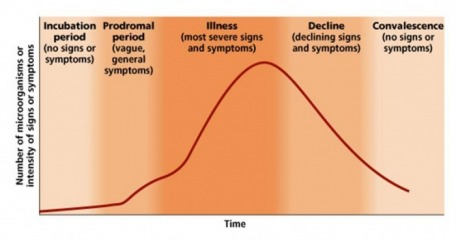Virology
Virulence Factors
Viral Virulence
1. Adhesion
2. Host invasion
3. Latency
4. High mutability
Stages of Infectious Diseases
1. Adhesion
2. Host invasion
3. Latency
4. High mutability
Stages of Infectious Diseases
Many infectious diseases have five stages following infection: an incubation period, the prodromal period, illness, decline, and convalescence.
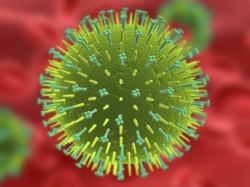
influenza virus
Incubation period
The incubation period is the time between infection and occurrence of the first symptoms or signs of disease. The length of the incubation period depends on various factors such as: virulence (degree of pathogenicity) of the infective agent, the infective dose (initial number of pathogens), the site of infection, etc.
Some diseases have typical incubation periods, whereas for others, the incubation period varies considerably.
E.g. Incubation period of Influenza: 1 day
AIDS: 1 ->8 years
The incubation period is the time between infection and occurrence of the first symptoms or signs of disease. The length of the incubation period depends on various factors such as: virulence (degree of pathogenicity) of the infective agent, the infective dose (initial number of pathogens), the site of infection, etc.
Some diseases have typical incubation periods, whereas for others, the incubation period varies considerably.
E.g. Incubation period of Influenza: 1 day
AIDS: 1 ->8 years
Prodromal period
The prodromal period is a short time of generalized, mild symptoms that precedes illness. Not all infectious diseases have a prodromal stage.
Illness
Illness is the most severe stage of an infectious disease. Signs and symptoms are the most evident during this time.
The prodromal period is a short time of generalized, mild symptoms that precedes illness. Not all infectious diseases have a prodromal stage.
Illness
Illness is the most severe stage of an infectious disease. Signs and symptoms are the most evident during this time.
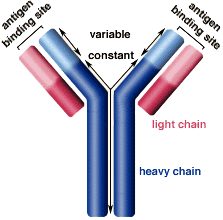
antibody
Decline
During the period of decline, the body gradually returns to normal as the patient’s immune response and/or medical treatment vanquish the pathogens. The body’s immune response and its products (such as antibodies in the blood) peak during this stage.
During the period of decline, the body gradually returns to normal as the patient’s immune response and/or medical treatment vanquish the pathogens. The body’s immune response and its products (such as antibodies in the blood) peak during this stage.
Convalescence
Convalescence is the recovery of the illness, and tissues and systems are repaired and returned to normal. The length of convalescence depends on the amount of damage, the nature of the pathogen, the site of infection, and the overall health of the patient.
Convalescence is the recovery of the illness, and tissues and systems are repaired and returned to normal. The length of convalescence depends on the amount of damage, the nature of the pathogen, the site of infection, and the overall health of the patient.

A patient is likely to be infectious during every stage of disease. Many people are unaware that infections can be spread during incubation and convalescence as well.
Sources of Infectious Disease
1. Once pathogens of humans have left the body through the various portals of exit, most cannot survive for long in the harsh environment.
2. The sites where the virus is maintained are called reservoirs of infection.
3. The three types of reservoir are animal, human and nonliving reservoir.
1. Once pathogens of humans have left the body through the various portals of exit, most cannot survive for long in the harsh environment.
2. The sites where the virus is maintained are called reservoirs of infection.
3. The three types of reservoir are animal, human and nonliving reservoir.

How do humans acquire zoonoses?
1. Direct contact with animals
2. Direct contact with animals’ waste
3. Eating the animals
4. Through bloodsucking arthropods (mosquitoes, fleas)
How to eradicate zoonoses in human?
Zoonoses in humans are difficult to eradicate as large animal reservoir are often involved. The greater the contact between humans and infected animals, the more difficult it is to control the spread of the disease to humans.
1. Direct contact with animals
2. Direct contact with animals’ waste
3. Eating the animals
4. Through bloodsucking arthropods (mosquitoes, fleas)
How to eradicate zoonoses in human?
Zoonoses in humans are difficult to eradicate as large animal reservoir are often involved. The greater the contact between humans and infected animals, the more difficult it is to control the spread of the disease to humans.
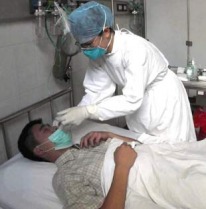
Some examples of diseases caused by zoonosis pathogens.
Malaria, rabies, swine influenza, SARS: severe acute respiratory syndrome, tuberculosis, dengue fever, etc.
http://www.veterinary-public-health.de/home_e/aufgaben/zoonosen/liste_zoonosen_e.htm
Malaria, rabies, swine influenza, SARS: severe acute respiratory syndrome, tuberculosis, dengue fever, etc.
http://www.veterinary-public-health.de/home_e/aufgaben/zoonosen/liste_zoonosen_e.htm
Human Reservoir
Humans with active diseases are a source of reservoirs of infection for other humans. Some of the carriers eventually develop the disease whereas others remain a continued source of infection without developing any symptoms.
Humans with active diseases are a source of reservoirs of infection for other humans. Some of the carriers eventually develop the disease whereas others remain a continued source of infection without developing any symptoms.
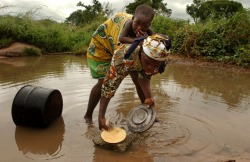
Nonliving Reservoir
Infection sites: Soil, water and food.
Soil, water and food may be contaminated with pathogens. Direct contact or ingestion of the contaminated sites can caused pathogenic infections.
Infection sites: Soil, water and food.
Soil, water and food may be contaminated with pathogens. Direct contact or ingestion of the contaminated sites can caused pathogenic infections.
